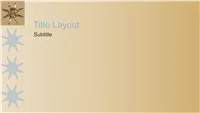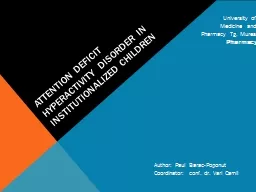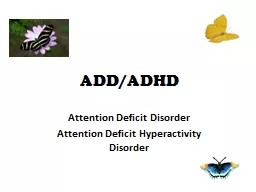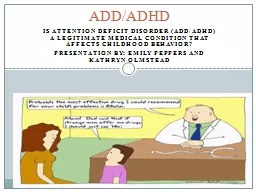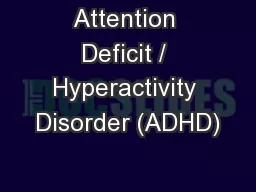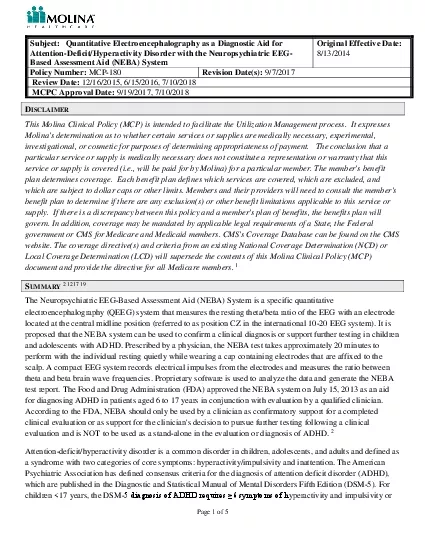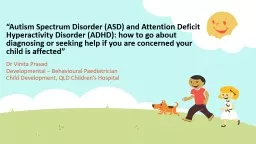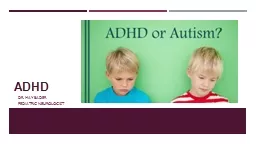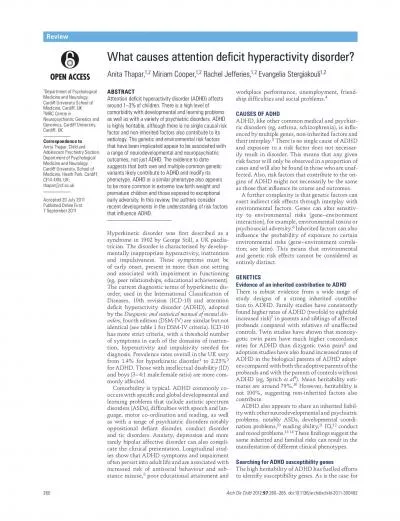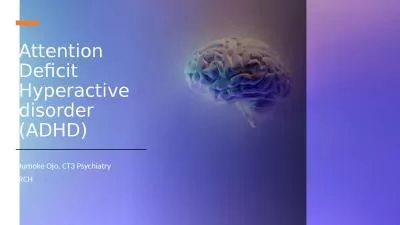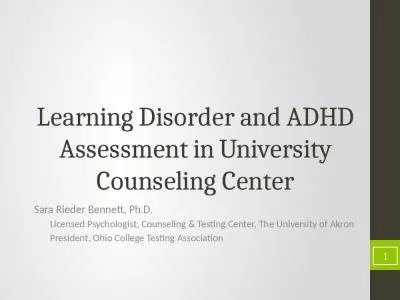PPT-Attention Deficit Hyperactivity Disorder
Author : lindy-dunigan | Published Date : 2020-04-03
What is ADHDADD Attention deficit hyperactivity disorder ADHD is one of the most common childhood disorders and can continue through adolescence and adulthood Symptoms
Presentation Embed Code
Download Presentation
Download Presentation The PPT/PDF document " Attention Deficit Hyperactivity Disorde..." is the property of its rightful owner. Permission is granted to download and print the materials on this website for personal, non-commercial use only, and to display it on your personal computer provided you do not modify the materials and that you retain all copyright notices contained in the materials. By downloading content from our website, you accept the terms of this agreement.
Attention Deficit Hyperactivity Disorder: Transcript
Download Rules Of Document
" Attention Deficit Hyperactivity Disorder"The content belongs to its owner. You may download and print it for personal use, without modification, and keep all copyright notices. By downloading, you agree to these terms.
Related Documents

